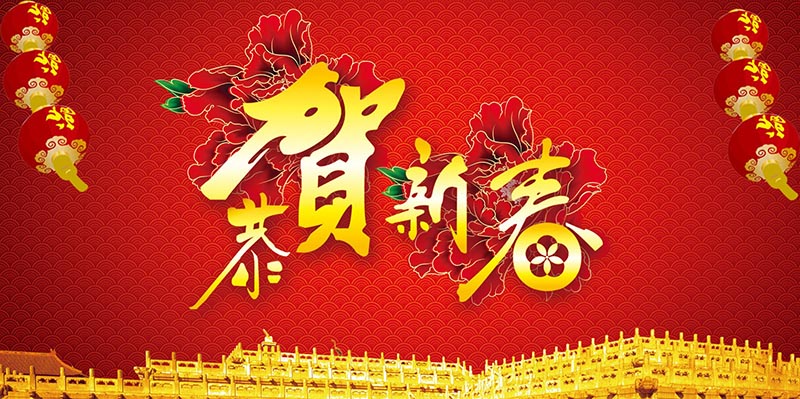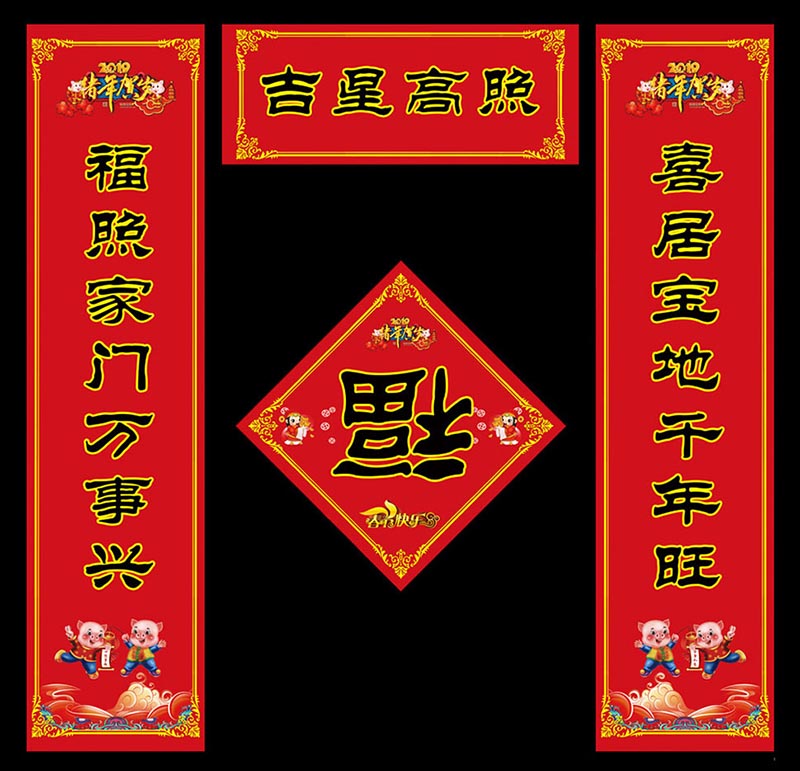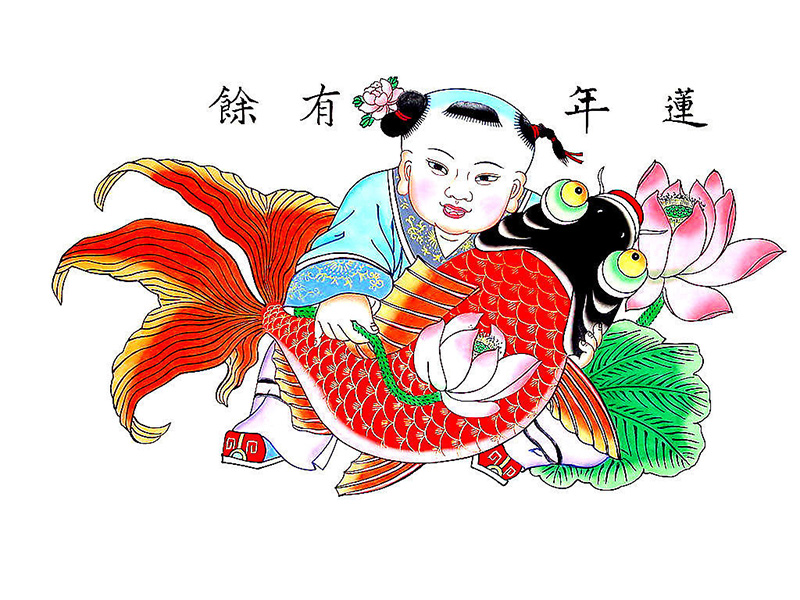中国农历新年英语(上)
时间过的真快呀,今天已是农历二十五,再过五天就是中国的农历新年了,也是咱们中国最重大的节日,那么关于新年的英语你知道多少?红包,春联,饺子,年画,春晚,年夜饭,这些的英语你都会说吗?如果让你给国外朋友介绍一下中国的农历新年的习俗你要怎么介绍呢?这次就和大家来学习一下农历新年有关的英语。
农历新年
The Chinese New Year is defined as the first day of the first month on the traditional Chinese calendar, which is based on a traditional Chinese lunisolar calendar whose date indicates both the moon phase and the time of the solar year.
中国新年是中国农历第一个月的第一天,而这一天是根据中国阴阳历来确定的,阴阳历能够同时显示月相和阳历时间。
A lunar month is around two days shorter than a solar month. This is why, according to the solar calendar, the Chinese New Year falls on a different date each year.
农历月一般比阳历月少两天。这也是每年农历新年的阳历日期都不相同的原因。
年兽
This legend says the beast Nian had a very big mouth that would swallow many people with one bite, which scared people. One day, an old man came to their rescue, offering to subdue Nian.
这个传说是关于一只名为“年”的猛兽,它的血盆大口能一次吞下许多人,很多人都十分惧怕它。有一天,一位老人前来降服年兽,拯救人们。
He said to Nian, ‘I hear that you are very capable, but can you swallow the other beasts of prey on earth instead of people who are by no means of your worthy opponents?’ So, it swallowed many of the beasts of prey on earth that also harassed people and their domestic animals from time to time.
他对年说:“我听说你很厉害,但你能吞下别的野兽吗?人类显然不是你的对手啊。”然后,“年”就吃掉了很多时常侵犯人和家畜的野兽。
After that, the old man disappeared riding the beast Nian. He turned out to be an immortal god. Now that Nian is gone and other beasts of prey were scared into forests, people began to enjoy a more peaceful life.
在那之后,老人骑着年兽离开了。原来他是位不朽的神仙。年兽消失了,其他野兽也因为害怕躲进了森林,人们从此过上了和平的日子。
Before the old man left, he told people to put up red paper decorations on their windows and doors at the end of each year to scare away Nian in case it snuck back again, because red is the colour the beast feared the most.
但在老人离开之前,他告诉大家,每年年末都要在窗户和门上贴红色的剪纸,以防年兽偷跑回来,因为年兽最害怕红色。
The custom of putting up red paper and firing firecrackers to scare away Nian should it have a chance to run loose is still around. However, people today have long forgotten why they are doing all this, except that they feel the colour and the sound add to the excitement of the celebration.
贴红纸、放鞭炮来防备、吓唬年兽的习俗后来保留了下来。不过现在,人们已经忘了他们为何做这些事,只是觉得红色和鞭炮声增加了节日的喜庆。
From then on, the tradition of observing the conquest of Nian is carried on from generation to generation.
从那以后,“看年兽被降服”成了代代相承的传统。
鼠年
Chinese legend tells of Buddha, the Emperor of the Heavens, inviting all animals to share in the New Year’s celebrations – only twelve animals appeared. To reward their loyalty, Buddha named a year after each one in the order they arrived: Rat, Ox, Tiger, Rabbit, Dragon, Snake, Horse, Ram/Sheep, Monkey, Rooster, Dog, and Boar/Pig.
这个故事讲述的是佛祖邀请所有动物来参加新年庆典,但却只有12只动物到场。为了奖励他们的忠诚,佛祖按照他们到来的先后顺序给每一年命名:鼠、牛、虎、兔、龙、蛇、马、羊、猴、鸡、狗和猪。
The 2020Chinese New Year celebrates the Year of the Mouse, the first animal honored by Buddha, and in the solar calendar this officially begins on 25 January 2020.
2020年的中国新年庆贺的是鼠年,这是被佛祖奖励的第一只动物,在阳历中,2020年的新春始于1月25日。
那么,过年都有哪些习俗呢?
Part 1: Preparations 准备
俗话说:“小孩小孩你别馋,过了腊八就是年”,腊月里庆祝新年的第一个小节点,自然当属“腊八节”。
Some Chinese start to celebrate and prepare for New Year as early as month 12 day 8 of the lunar calendar. This is a festival called Laba.
一些中国人最早从农历十二月初八就开始庆祝、准备过新年。这一天被称为“腊八”。
咱们传统民谣唱得好:
二十三,糖瓜粘;二十四,写福字; 二十五,扫尘土;二十六,去买肉; 二十七,宰公鸡;二十八,把面发; 二十九,蒸馒头;三十晚上熬一宿;大年初一扭一扭。
自农历腊月二十三的“小年”开始,年味就越来越浓了。
A small year is the 23rd or 24th of the last month of the year. It is said that this is the day the God of Kitchen will leave the family in order to go to heaven and report on the activity of family to the Emperor of the heaven.
小年是腊月二十三或二十四(南方小年比北方小年晚一天)。据说这一天,灶王爷会离开人间去向玉皇大帝汇报家家户户的情况。
People will follow religious ceremonies to say farewell to the God of Kitchen, including taking down and burning the painting of the god. After New Year’s Day, people will buy new paintings of the God of Kitchen and display it in the kitchen.
人们会按照一些传统礼仪来祭灶王,包括祭祀完后揭下并焚烧灶王神像。等新年过后,人们会买来新的灶王像放置在厨房。
1 Cleaning the House
大扫除
From the 23rd of the 12th lunar month (January 20, 2017), Chinese people carry out a thorough cleaning of their houses. The cleaning is called ‘sweeping the dust’, and represents a wish to put away old things, bid farewell to the old year, and welcome the New Year.
自腊月23(2017年1月20日)开始,中国人会彻底把房子打扫一遍,这被称为“扫尘”,代表除去旧事物,与过去一年说再见,迎接新年。
2 Decoration
布置屋子
After cleaning, people will decorate the house to welcome the New Year. Most of the decorations are red. The most popular New Year decorations are upside down fu, couplets, lanterns, year paintings, paper-cutting, door gods, etc.
打扫好房间后,人们通常会好好布置一下屋子来迎接新年。大多装饰物都是红色的。最流行的莫过于“倒福字”、对联、灯笼、年画、剪纸、门神等。
◆ Affixing Door God Image 贴门神 ◆
In the beginning, door gods were made of peach wood carved into the figure of a man, hanging by the door. Later people pasted printed images on doors.
起初,“门神”是挂在门前的男子桃木雕像。后来,人们则把印好的门神像贴在门上。
People paste door gods on doors as a prayer for blessings, longevity, health, and peace. Two door gods on double doors are thought to keep evil spirits from entering.
人们在门上贴门神,来祈求幸福、长寿、健康与和平。两扇门上的门神被认为能够驱赶恶灵。
The door gods symbolize righteousness and power in China, therefore Chinese door gods are always scowling, holding various weapons, and ready to fight with evil spirits.
门神在中国象征正义与力量,因此中国的门神总是皱着眉头、手持各种武器,准备同恶鬼斗争。
◆ Putting up Spring Couplets 贴春联 ◆
Spring couplets are paired phrases, typically of seven Chinese characters each, written on red paper in black ink, and one pasted on each side of a door frame. Sometimes a phrase of four or five characters is affixed to the top of the door frame as well.
春联是对仗工整的文字,通常一联七字,由黑墨笔写在红纸上,然后贴在门框两侧。有时,四五字的横批也会贴在门框顶端。
New Year couplets are filled with best wishes. Some people write the couplets themselves, but most people buy them (ready printed) from the market. Pasting spring couplets is thought to keep evil away.
春联里满是美好的祝福。一些人会自己写,而大部分人则从商店里买已经写好的春联。贴春联也被看作是驱魔除恶的方式。
◆ Putting up New Year Paintings 贴年画 ◆
The subjects of New Year paintings are often flowers and birds, plump boys and Guanyin, golden roosters, oxen, ripe fruit and treasure, or other legends and historical stories, showing desires for bountiful harvests and a happy life.
年画的内容通常是花、鸟、大胖小子和观音、金鸡、牛、丰富的水果珍宝,或者传说和历史故事,以此来表达人们对来年丰收和幸福生活的祈求。
◆ Putting up Paper Cutouts 贴窗花 ◆
In the past people pasted paper cutouts on windows facing south and north before the Spring Festival. Paper cutouts are usually diamond-shaped in lucky red, with beautiful and exaggerated patterns. They express hopes of a merry and prosperous life, in line with the Spring Festival theme.
过去,人们在春节前将窗花朝南北向贴在窗户上。这些剪纸通常用红色的纸精致剪成菱形,图案夸张,表达了人们对快乐或对幸福生活的希望,与春节的主题相同。
3 New Year Shopping
备年货
People buy New Year food and snacks, New Year decorations, and clothes for the New Year before New Year’s Eve. Chinese New Year, like Christmas in China, is a major shopping time.
人们在除夕夜前购买新年的食物、小吃、装饰物和新衣服。中国新年和中国的圣诞节一样,是“剁手期”……










